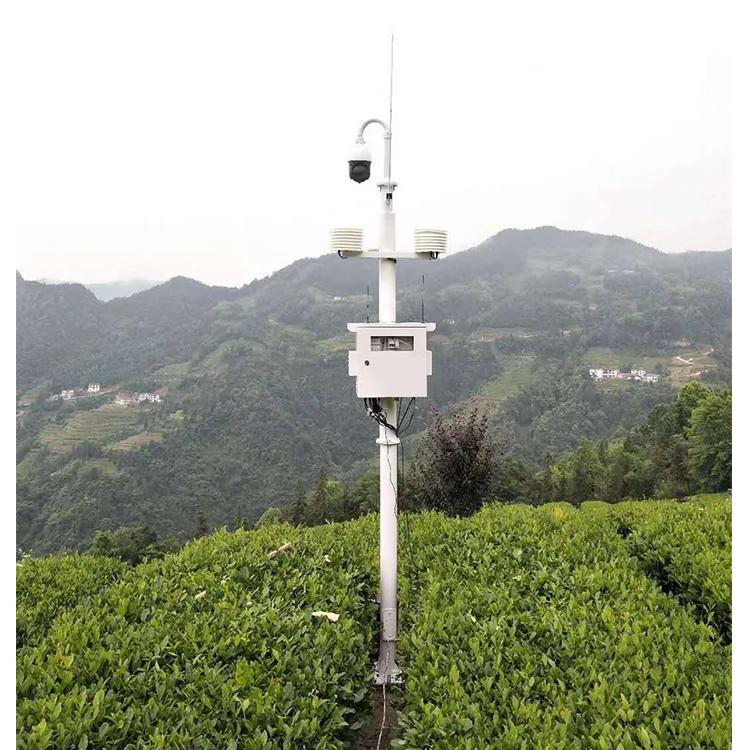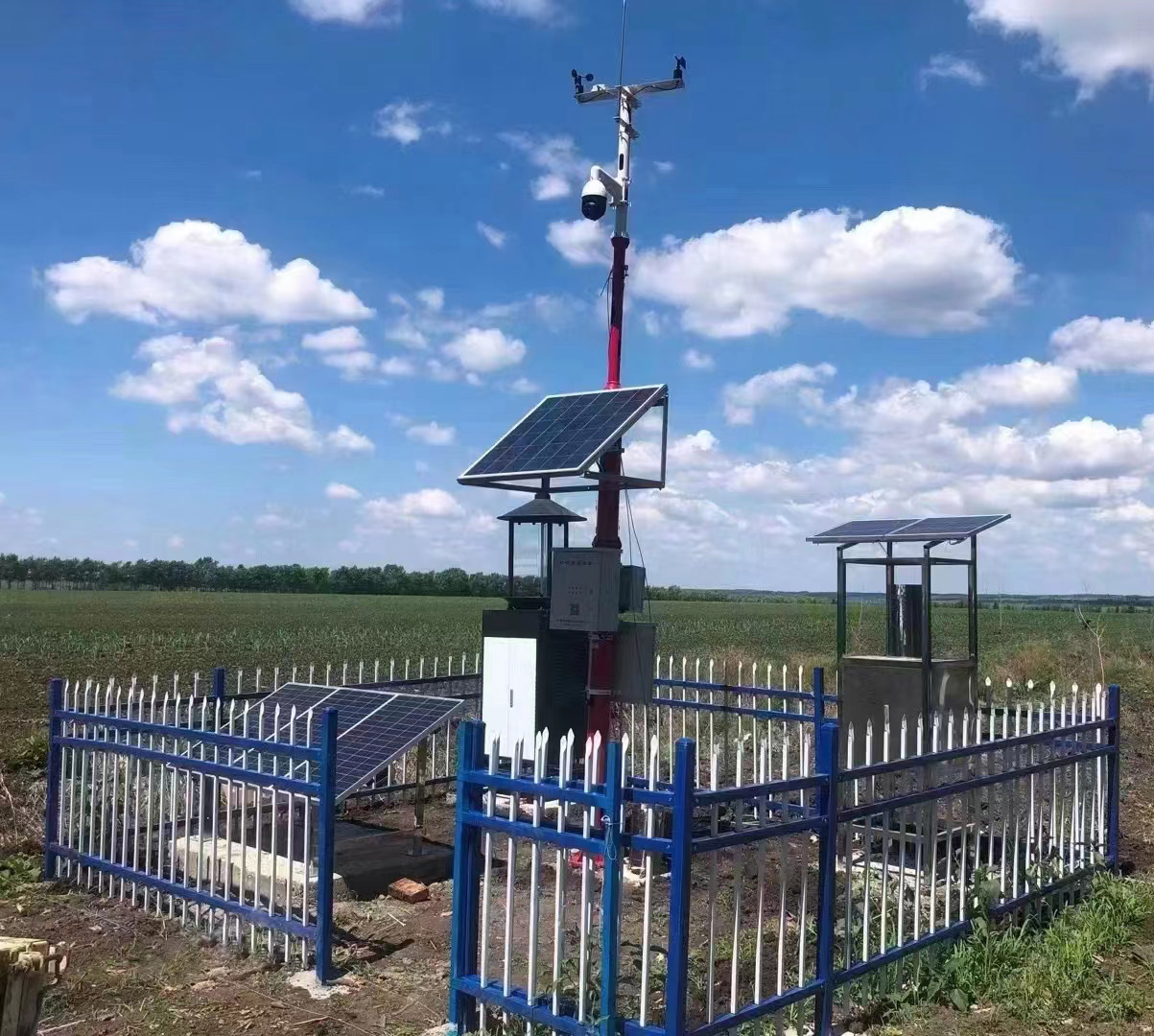

— Blogs —
—Products—
 Consumer hotline +8618073152920
Consumer hotline +8618073152920 WhatsApp:+8615367865107
Address:Room 102, District D, Houhu Industrial Park, Yuelu District, Changsha City, Hunan Province, China
Product knowledge
Time:2025-04-08 11:44:40 Popularity:42
In modern agriculture, weather conditions significantly impact crop growth and yield. Agricultural meteorological stations, as an efficient monitoring tool, can collect key environmental data in real time and provide scientific support across various aspects of agricultural production. From planting decisions to field management, and disaster prevention, agricultural meteorological stations are integral throughout the entire agricultural process, helping farmers improve efficiency and reduce risks. This article will explore the specific applications and value of agricultural meteorological stations in agriculture, focusing particularly on the role of field microclimate meteorological stations and field meteorological stations in farm management.
Agricultural meteorological stations monitor key meteorological factors such as temperature, humidity, light, and wind speed, offering comprehensive support for agricultural production. The main application areas in agriculture are as follows:
Crops require specific climatic conditions for optimal growth, and agricultural meteorological stations help farmers select the best sowing time and suitable crop varieties by monitoring air temperature, soil temperature, and light intensity in real time. For instance, in spring, the monitoring station can determine if the soil temperature reaches the minimum requirement for seed germination, or in areas with insufficient light, shade-tolerant crops can be recommended. These data-driven decisions improve crop survival rates and yields.
Field management is a core component of agricultural production. The data provided by agricultural meteorological stations guide activities such as irrigation, fertilization, and weeding:
- Irrigation Management: By monitoring soil moisture and precipitation, farmers can calculate irrigation needs precisely. For example, when soil moisture is below the crop's required threshold, water can be added promptly; after rainfall, irrigation can be reduced to avoid waste.
- Fertilization Planning: Temperature and humidity data help determine the best time for fertilization. For instance, in high temperature and high humidity conditions, the use of chemical fertilizers should be reduced to prevent volatilization loss.
- Weeding and Ventilation: Wind speed and direction data guide the spraying of herbicides to avoid drift, and optimize field ventilation to reduce the risk of diseases.

Many pests and diseases are closely related to meteorological conditions. Agricultural meteorological stations, by monitoring humidity, temperature, and wind speed, assist in predicting peak disease occurrences. For example, high humidity and warm weather may trigger fungal diseases, allowing farmers to spray preventive agents in advance. These preventive measures reduce pesticide usage, protect the environment, and lower costs.
Natural disasters such as droughts, floods, and frosts pose significant threats to agriculture. Agricultural meteorological stations can detect abnormal weather changes early, such as a sudden increase in rainfall or a sharp temperature drop, and issue warning signals. Farmers can then take protective measures, such as reinforcing drainage systems or covering crops, to minimize damage.
The basic data provided by agricultural meteorological stations can be used to generate targeted weather forecasts and advisory services. For example, agricultural departments can analyze temperature and rainfall trends to offer planting advice or disaster response strategies. These services enhance the adaptability of agriculture and its capacity to mitigate risks.

Field microclimate meteorological stations are portable devices designed specifically to monitor the localized environment of farmland. They integrate sensors, wireless transmission, and data processing functions to record parameters such as field temperature, humidity, light, wind speed, wind direction, and rainfall in real time. Their specific applications in agriculture include:
Field microclimate meteorological stations capture subtle climatic changes in the farmland, such as the increase in humidity caused by morning dew or the peak of light intensity in the afternoon. These data help farmers understand dynamic changes in the crop-growing environment and adjust management strategies in a timely manner.
By monitoring soil moisture and rainfall, farmers can precisely control irrigation. For example, in dry seasons, the data indicates when to increase water supply, and before heavy rainfall, preparations can be made for drainage to prevent root flooding. This precise management improves water resource utilization efficiency.
High humidity or specific wind directions may accelerate pest and disease spread. Data from field microclimate meteorological stations help agricultural experts predict risks and develop control plans. For instance, when humidity exceeds 80%, fungicides can be applied in advance to protect crops.
Data is uploaded to the cloud via wireless technology, allowing farmers to monitor field conditions through their phones or computers at any time. For instance, a farmer can check the moisture level in a distant field from home, eliminating the need for frequent on-site inspections. This remote monitoring function increases work efficiency, especially for large-scale farms.
The portability and high precision of field microclimate meteorological stations make them ideal tools for modern precision agriculture, helping farmers address local climate challenges.
Field meteorological stations, small observation devices installed on farmland, focus on providing real-time data support for farm management. Their specific applications in farm management include:
By monitoring soil moisture and precipitation, field meteorological stations help farmers determine the optimal time and amount of irrigation. For example, during dry weather, the data guides increasing irrigation frequency, while in the rainy season, it reduces artificial watering. This fine management ensures balanced crop water levels while conserving resources.
Temperature and humidity data reveal potential risks for pests and diseases. For example, continuous high humidity may lead to a powdery mildew outbreak, and farmers can take preventive measures based on monitoring results. This predictive ability reduces the excessive use of chemicals and protects the ecological environment.
Light intensity and wind speed data help farmers adjust the layout of their fields. For instance, in areas with insufficient light, measures to enhance light penetration can be taken; in windier areas, wind-resistant crop varieties can be planted. These adjustments improve crop growth efficiency and yield.
Real-time data from field meteorological stations provide the foundation for agricultural meteorological services. For example, agricultural consultants can recommend the best fertilization times or issue flood warnings based on wind direction and rainfall trends. These services enhance farmers' ability to cope with weather changes.
The widespread use of agricultural meteorological stations in agriculture is attributed to their significant advantages:
- Real-time Data: Rapid data updates ensure timely decision-making.
- Accuracy: High-precision sensors provide reliable information, minimizing errors.
- Convenience: Wireless transmission and remote access improve usability.
In the future, as the Internet of Things (IoT) and big data technologies continue to evolve, the functionality of agricultural meteorological stations will expand further. For example, multiple stations can be networked to form regional monitoring networks, and AI analysis can predict crop yield or disaster risks. This intelligent upgrade will propel agriculture towards higher levels of precision and sustainability.
Agricultural meteorological stations play a key role in planting decisions, field management, pest and disease control, and disaster early warning. Field microclimate meteorological stations and field meteorological stations, through precise monitoring of the farm environment, help farmers optimize resource use and improve production efficiency. For international customers, this technology not only serves as a powerful assistant for modern agriculture but also as a reliable tool for addressing climate change and achieving sustainable development. With ongoing technological advancements, agricultural meteorological stations will play an increasingly important role in global agriculture, contributing to both harvests and environmental protection.
Prev:Agricultural Automatic Meteorological Stations
Next:Small-Scale Weather Stations: Flexible Solutions for Modern Weather Monitoring
Related recommendations
Sensors & Weather Stations Catalog
Agriculture Sensors and Weather Stations Catalog-NiuBoL.pdf
Weather Stations Catalog-NiuBoL.pdf
Related products
 Combined air temperature and relative humidity sensor
Combined air temperature and relative humidity sensor Soil Moisture Temperature sensor for irrigation
Soil Moisture Temperature sensor for irrigation Soil pH sensor RS485 soil Testing instrument soil ph meter for agriculture
Soil pH sensor RS485 soil Testing instrument soil ph meter for agriculture Wind Speed sensor Output Modbus/RS485/Analog/0-5V/4-20mA
Wind Speed sensor Output Modbus/RS485/Analog/0-5V/4-20mA Tipping bucket rain gauge for weather monitoring auto rainfall sensor RS485/Outdoor/stainless steel
Tipping bucket rain gauge for weather monitoring auto rainfall sensor RS485/Outdoor/stainless steel Pyranometer Solar Radiation Sensor 4-20mA/RS485
Pyranometer Solar Radiation Sensor 4-20mA/RS485
Screenshot, WhatsApp to identify the QR code
WhatsApp number:+8615367865107
(Click on WhatsApp to copy and add friends)